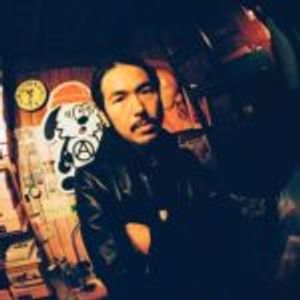From the art scene to fashion to the music scene, Hirroton is widely recognized in Japan and around the world. In May, he held a solo exhibition at BEAMS T Harajuku, marking 10 years since he first started drawing. In conjunction with his solo exhibition, he released Paradox, a collection of his works. Hirotton has been making art with punk and skate culture as its foundation consistently for ten years. We explore the roots of his art and the true meaning behind his work.
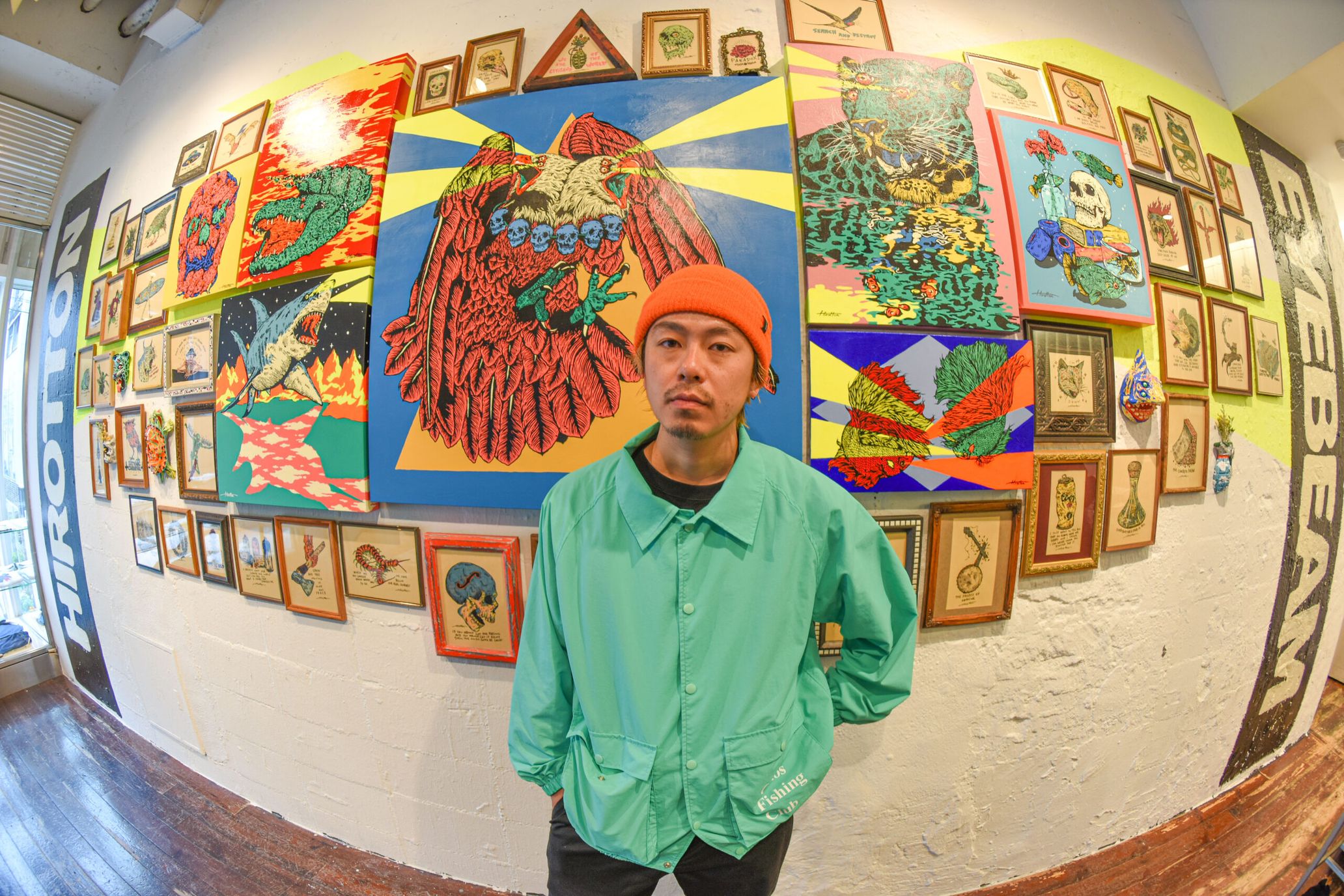
Taking an interest in drawing in London
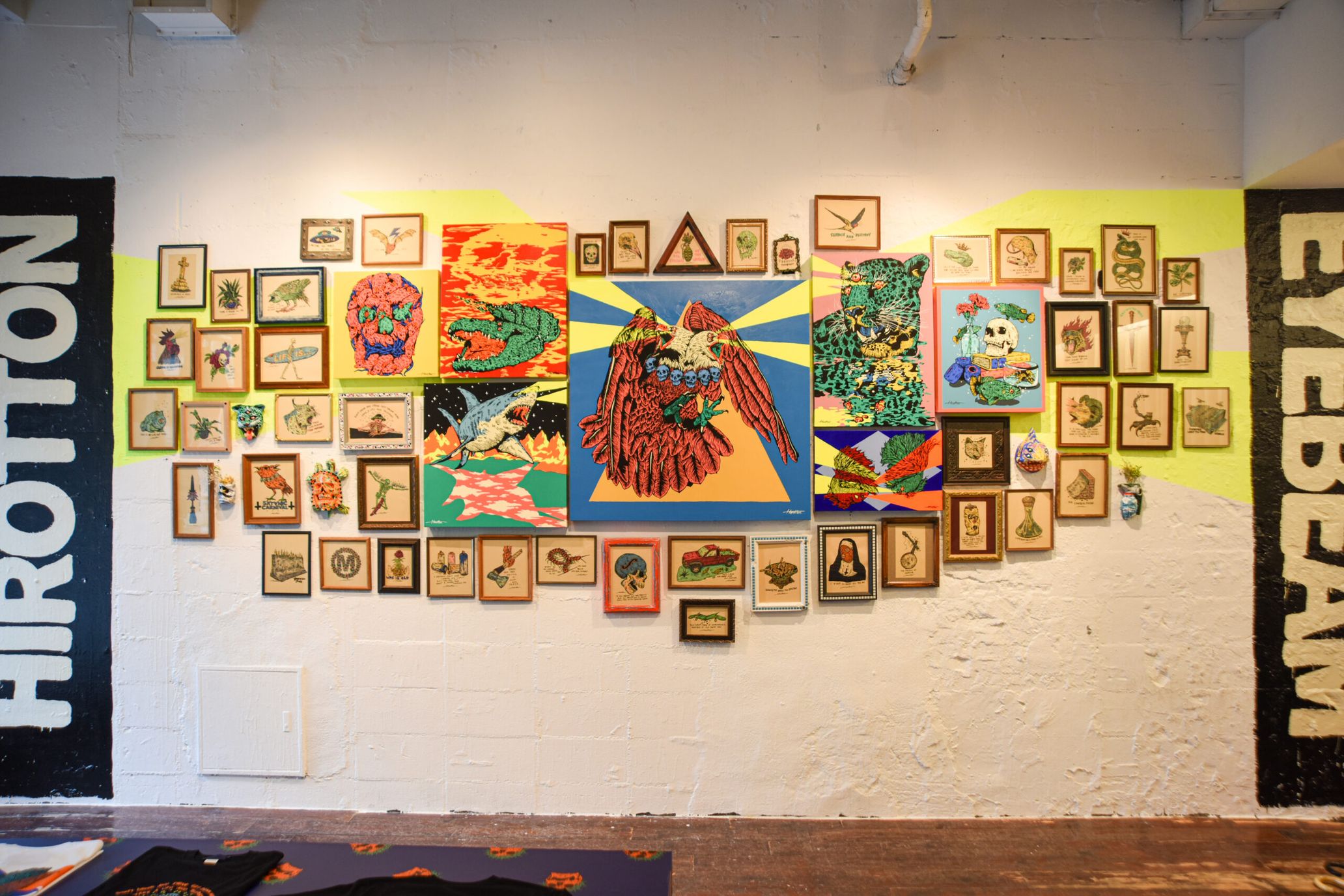
Installation from solo exhibition Eye Bea
――Your solo exhibition Eye Beam held in May marked the 10th anniversary of your car
Hirotton: Yes, I will have been drawing for ten years in 2022. I see Eye Beam as the culmination of my career. I released my art book Paradox in conjunction for the same reason. HIDDEN CHAMPION handled its editing and publishing.
――You’ve released many books, booklets, and zines in the past. Is there a reason you wanted to release a hardcover art book like this one?
Hirotton: I believe in the importance of keeping a proper record of your work. It’s nice to be remembered by those who came to see my exhibition, but I’ve been wanting to preserve my art as a solid collection of work for a while. I personally own art books of many artists I respect, and thought it would be best to release mine at the the ten-year mark.
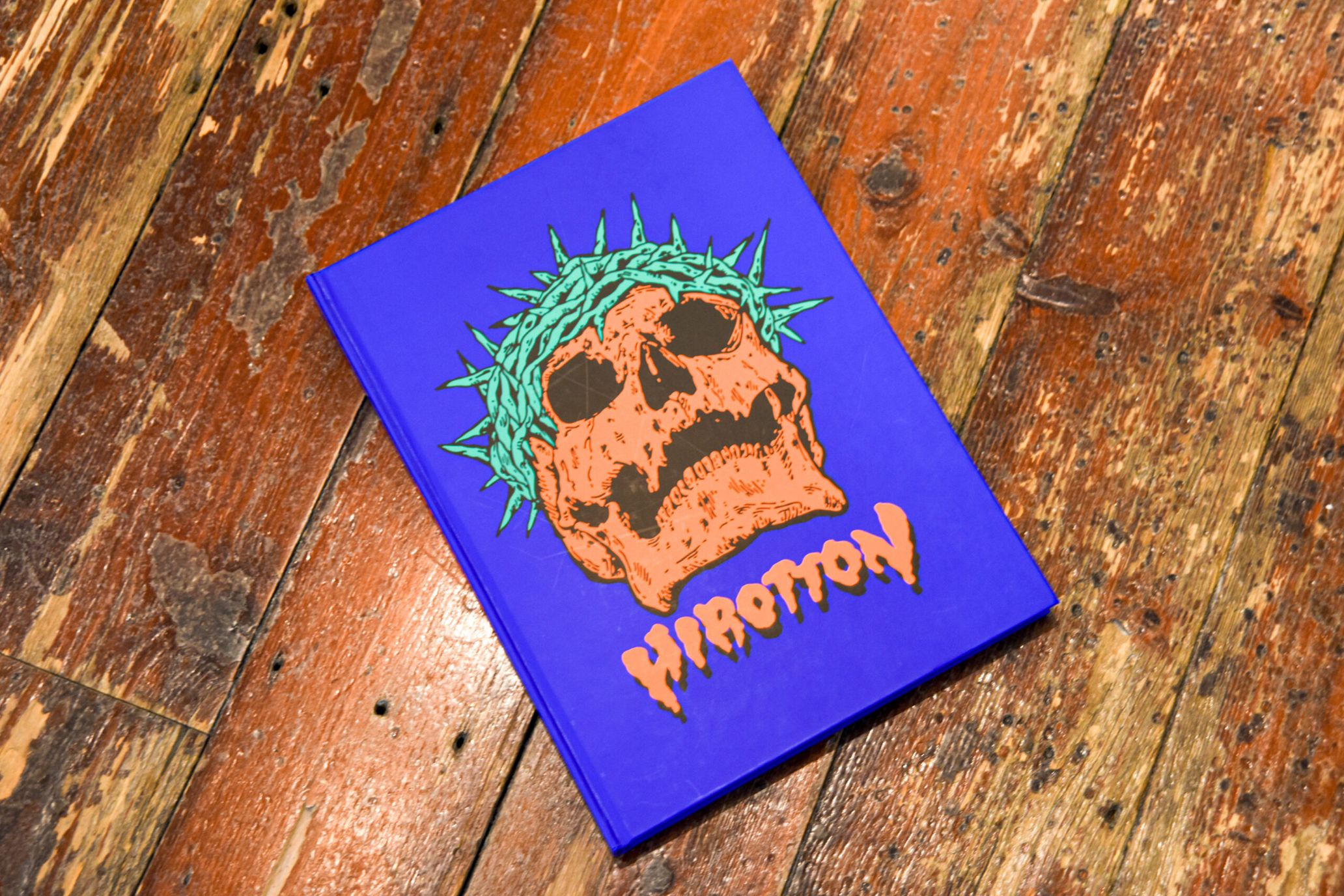
Hirotton’s first ever art book, Paradox
――What made you start drawing ten years ago?
Hirotton: I made objects and 3D structures at the Osaka University of Arts. Since I didn’t have a clear idea of what I wanted to do after graduation, I decided to go to London. I didn’t go there for any clear purpose, though. Only because I liked punk culture.
At the time, the skate brand HEROIN SKATEBOARDS had their offices in London (they’ve moved to the U.S. since). The team there consisted of artists and skaters who liked punk. The zines they made got me into the idea of drawing. The art in those zines weren’t particularly skillful drawings, but they had energy and passion. That’s what initially got me interested in drawing. I don’t think I would be doing this if I didn’t go to London.
――I see! Can you tell us more about before you went to London? What were some of the roots you established in Osaka that lead you to where you are now?
Hirotton: If I were to go back to my roots, CHOPPER, the boss of the skate team OSAKA DAGGERS, was a huge influence of mine back in high school. In addition to being a part of the HEROIN SKATEBOARDS crew, CHOPPER’s skate style and punk fashion sense were very impactful. One of the reasons why I wanted to go to the Osaka University of Arts is because I wanted to skate with CHOPPER. I also met a lot of interesting people skating in Sankaku Park and was able to build a lot of experience through those interactions. I probably wouldn’t have gone to London if I hadn’t gone to Osaka, either.
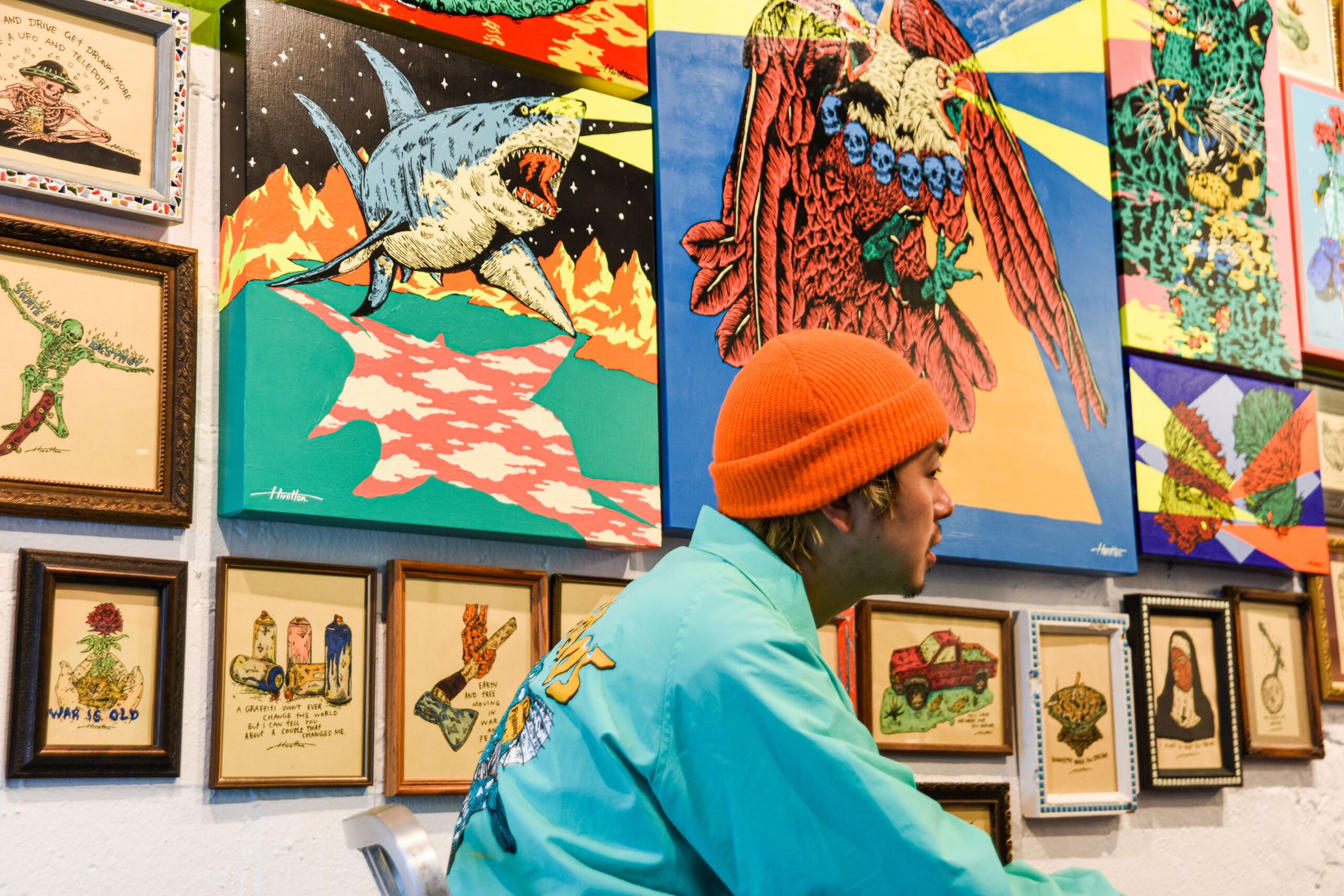
The impact of CRASS’s DIY ethic
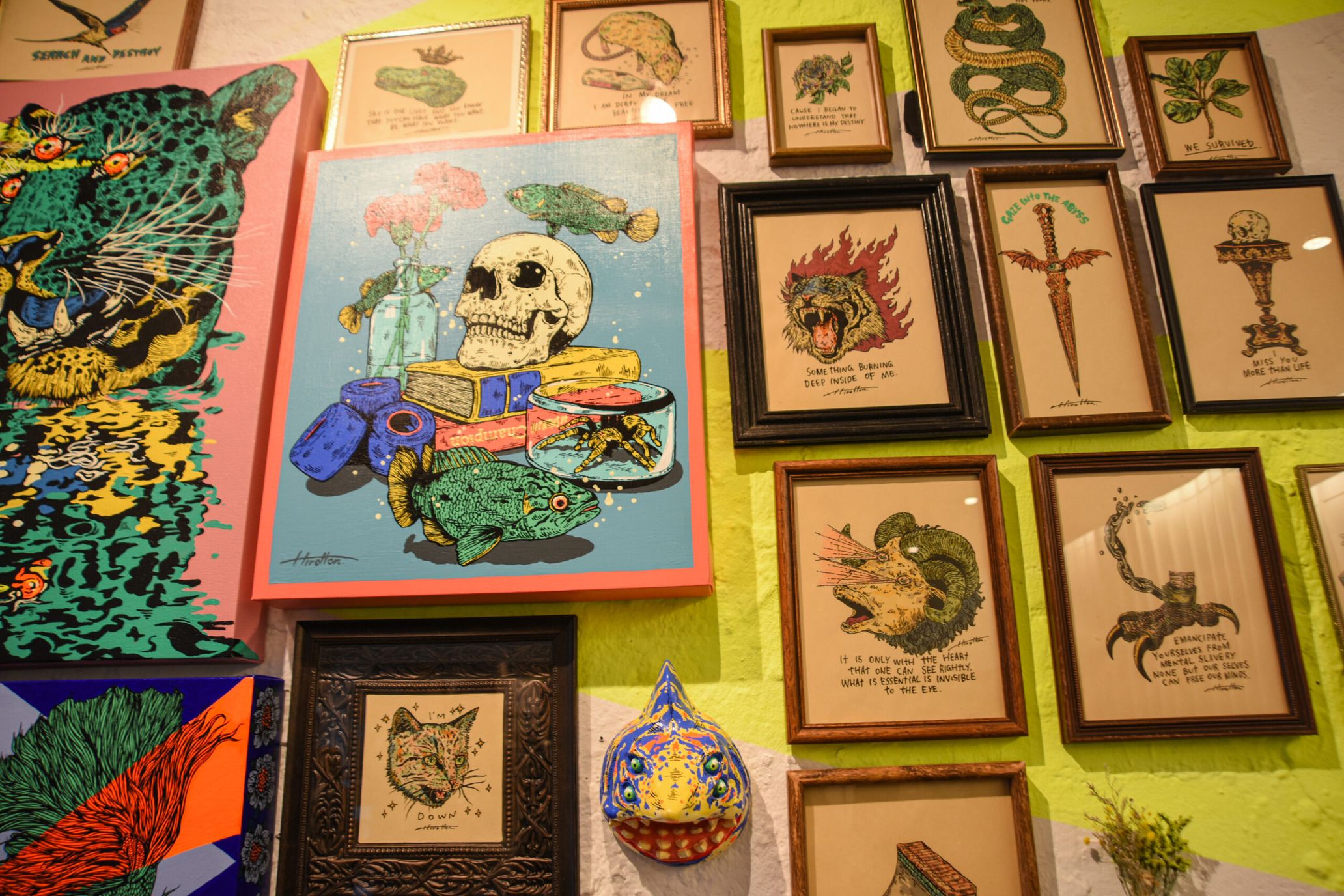
――Punk culture’s influence on you is evident in your work. Who are some artists you’re most influenced by?
Hirotton: Probably the band CRASS. Of course I love their message, their DIY style, their music, and their artwork, but I also share and respect their general stance. While I was living in London, I went to a solo exhibition of Gee (Vaucher), who was in charge of CRASS’s artwork, and met her in person. I told her I wanted to visit Dial House*.
*Dial House: A self-sustaining anarcho-pacifist open house popularized by Crass
――That’s how you ended up at Dial House?
Hirotton: Talking to Gee and getting in touch with her was a big part of it, but coincidentally, my housemate at the time was a regular at Dial House. He commuted there to learn how to be one with nature, not because he knew of CRASS. I went because I had that connection, too. Dial House is truly a fascinating place.
――Did your experience at Dial House affect any part of what you’re doing now?
Hirotton: Of course it did. I was impacted by Dial House and CRASS’s activism, but also by their fundamental DIY, self-sustainability ethic. The fact that I was actually able to experience those things made a huge impression on me. I also had the idea to make my own book after seeing Gee’s at Dial House.
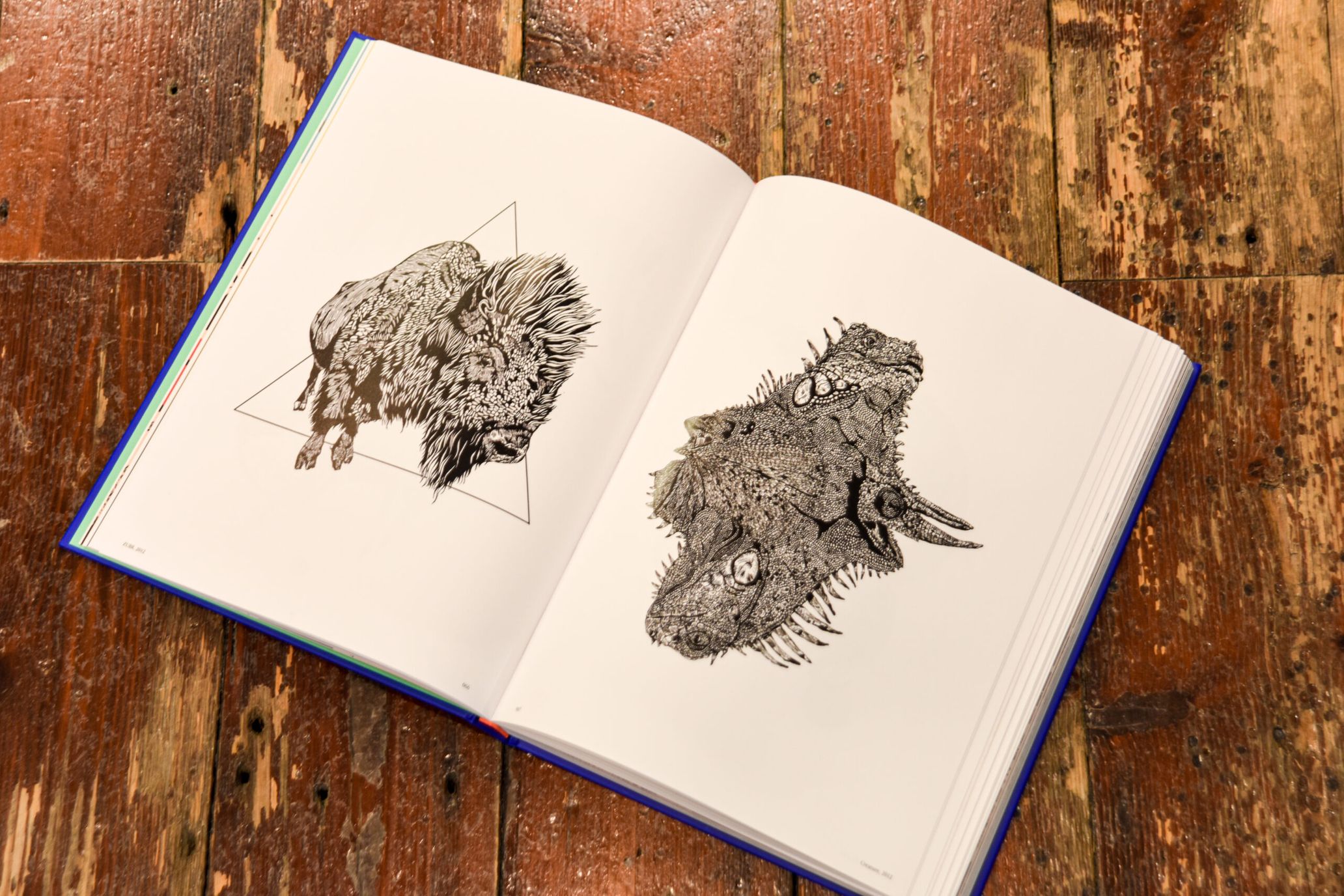

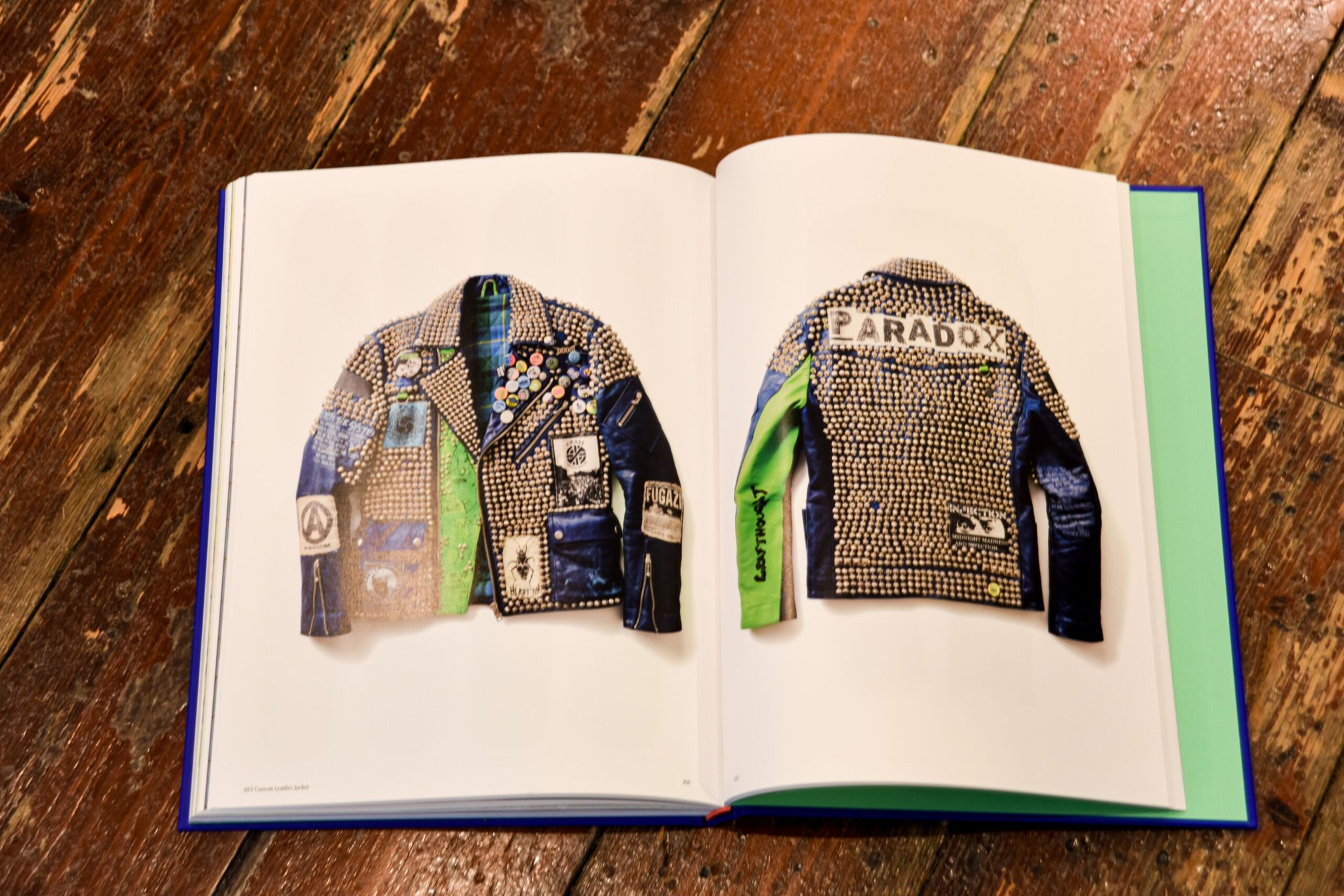
From art book Paradox
Taking action to get inspired
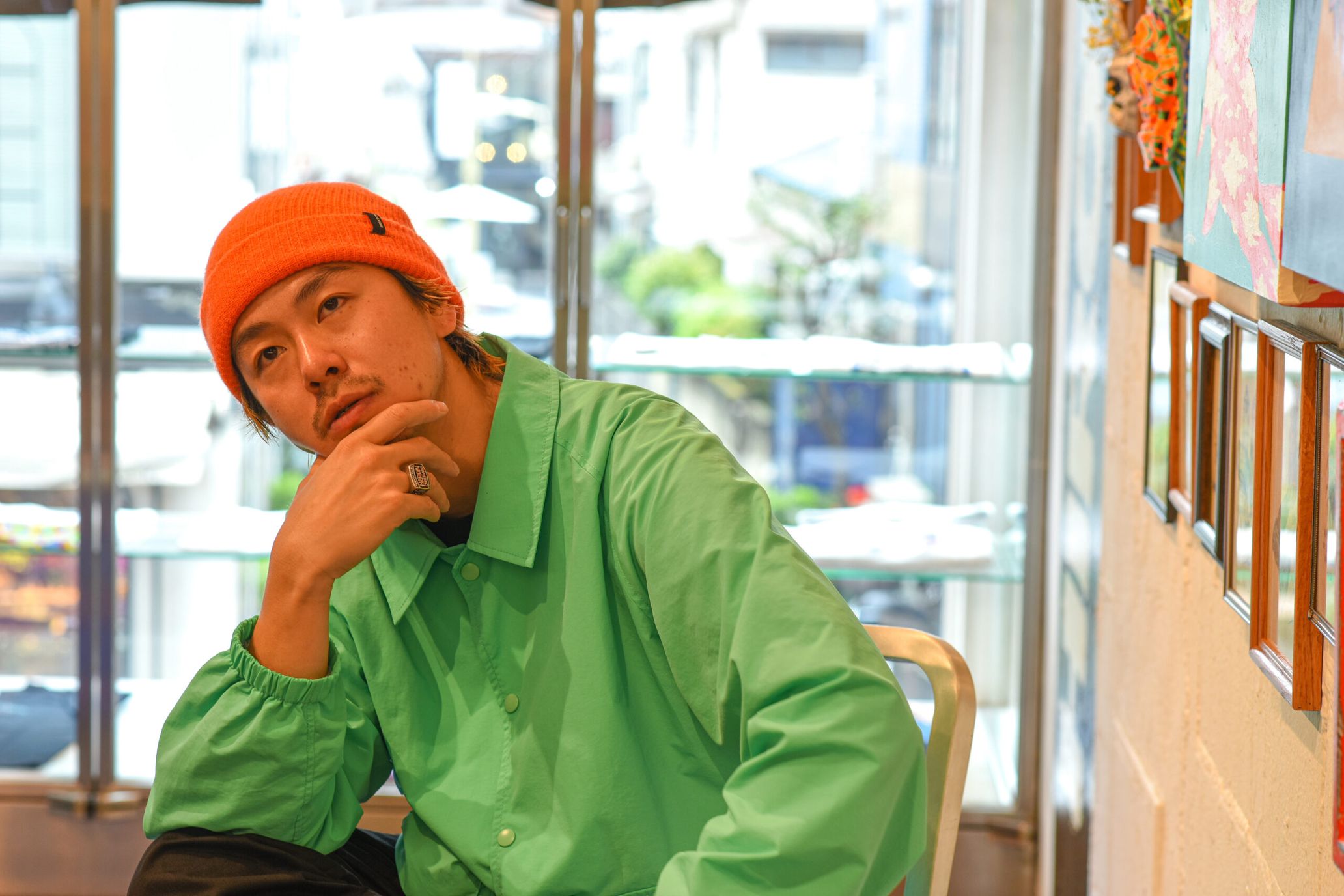
――I see. If I recall, you exhibited a household object you made in your 2015 solo exhibition KNOCKING AT THE DOOR OF MY BRAIN. You incorporate many household motifs in your work.
Hirotton: That exhibition in particular also included many drawings of houses. The first picture I drew was the house I lived in during my time in London. I had always liked things that had to do with houses; that may be one of my roots, as well. That’s why I personally never want to stay in one place. I travel to seek change and stimulation.
――Please tell us more about your artistic style. Many of your works are quite detailed. What were some of the influences for these pieces?
Hirotton: I take inspiration from many things, so I can’t pinpoint a specific one. I like old book illustrations and also take influence from the artwork of hardcore rock bands and skateboard graphics. I’m a culmination of many things.
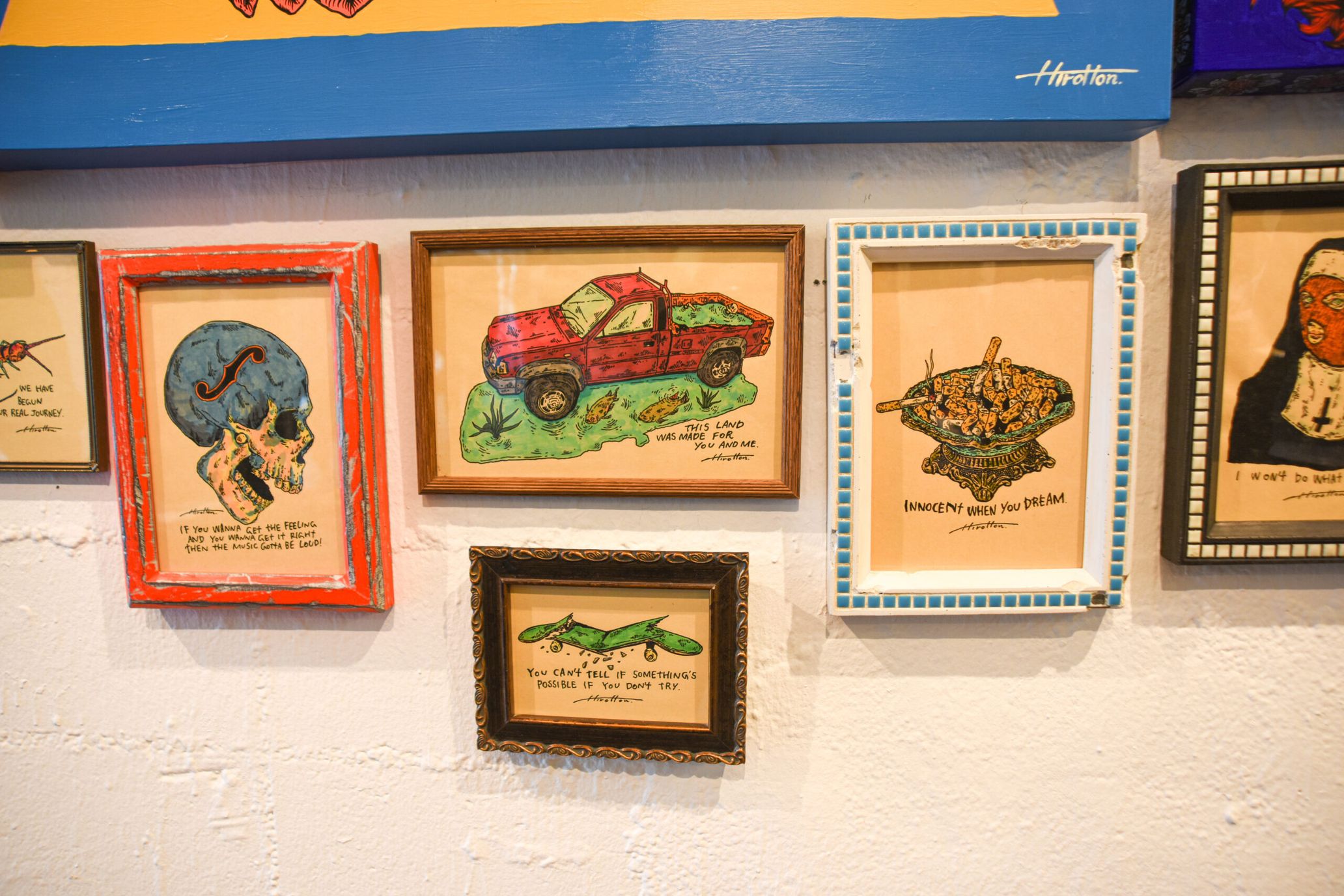
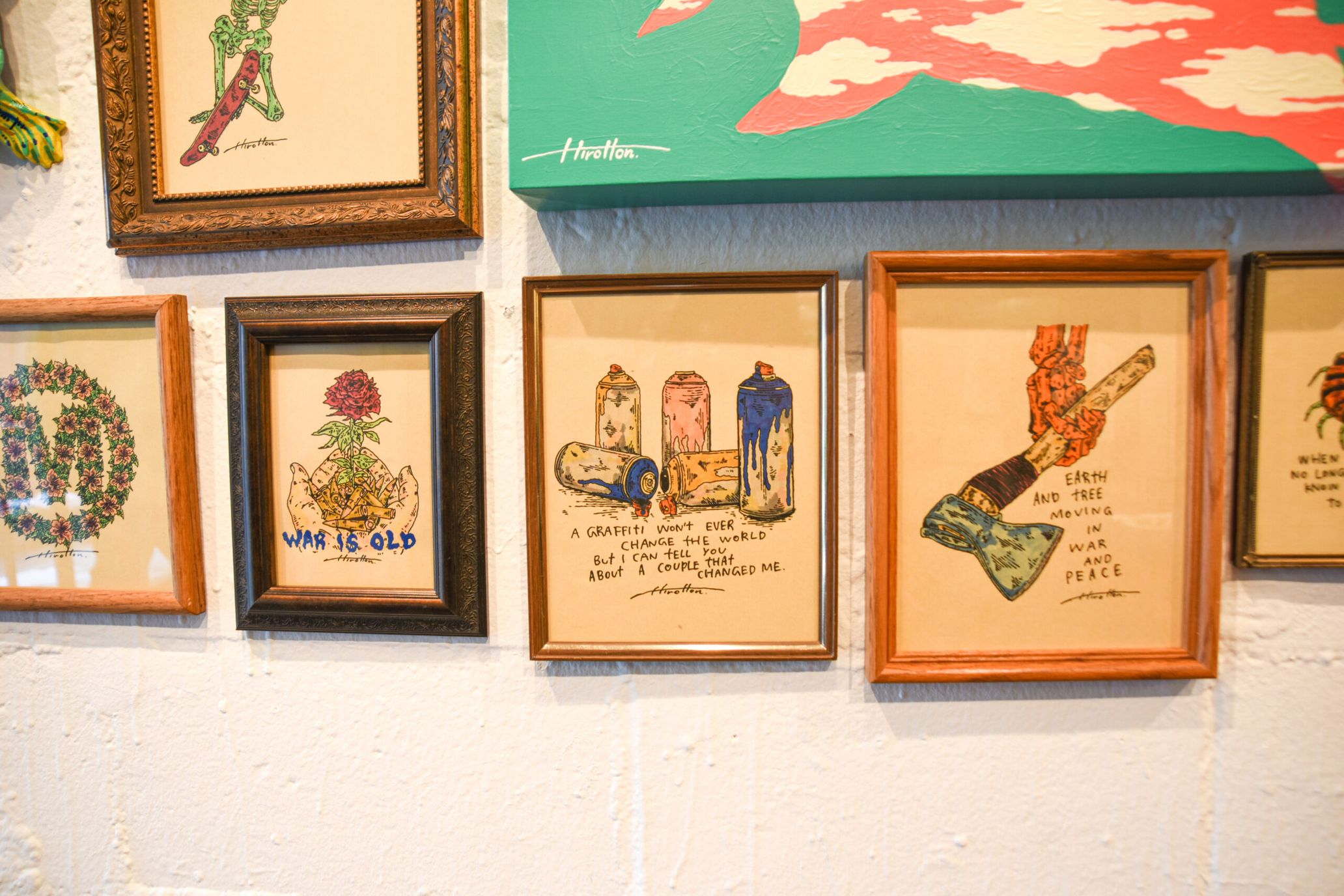
Works from the “5mindrawing” series
――While there are intricately drawn works, you also have some rough drawings in your “5mindrawing (5 minute drawings)” series. Were those exhibited at Eye Beam as well?
Hirotton: They were. Although now they’ve evolved to the point where they’re no longer drawings that can be done in 5 minutes (laughs). I started the “5mindrawing” series because I thought the rough idea-based drawings were actually quite realistic and interesting. That’s why I include written messages in each one. Since these drawings are small and don’t take as long to draw as my pieces on canvas, I’m able to price them reasonably so that the young people and skaters who come to my shows can casually purchase them. That’s why I still exhibit them.
――Have you been making a lot of these 3D structures lately?
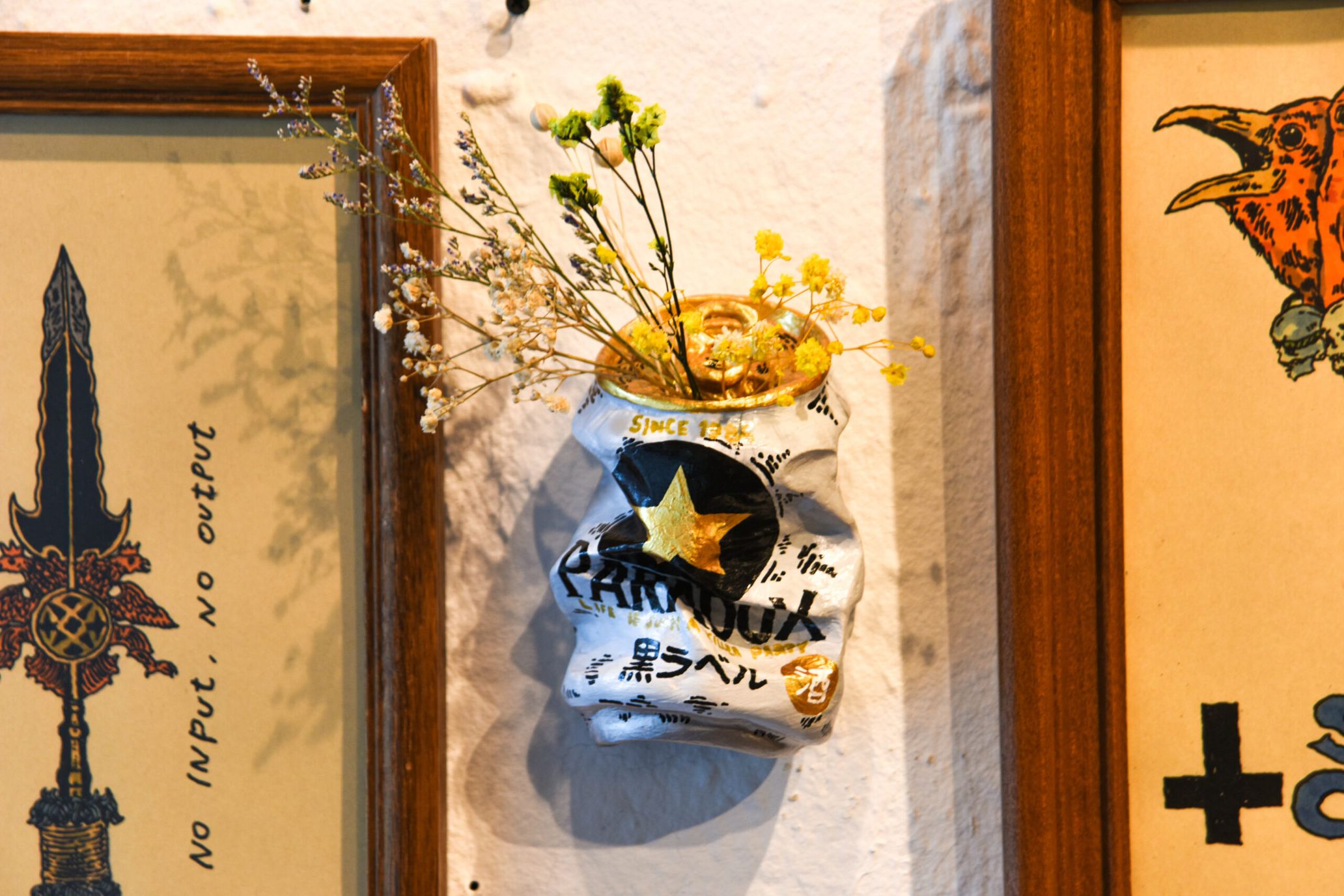
Hirotton: This was my first approach at this type of art. I drew on an object my friend made out of wood clay.
――Please tell us about work you’ve been doing outside of drawing.
Hirotton: A friend and I run a silkscreen studio called HAILPRINTS. I also make silkscreen items under the name PARADOX. I learned how to do silkscreen while in London, and mastered those skills there. I basically make all of my own products myself as well as print my own tags, because I think that doing it myself conveys more passion. There’s something that can only be communicated when you do things yourself.
――Lastly, what are some things you’d like to try in the future after hitting this major 10-year milestone?
Hirotton: I want to exhibit my work abroad. I know it’s difficult now in this current climate, but I have more to show the rest of the world because of the release of my art book. I don’t mind continuing to work in Japan, but I want to broaden my horizons. I want to try to continue to share my work abroad since my career as an artist started after being impacted by my time in London. Whatever the future may hold, the first step is to act.
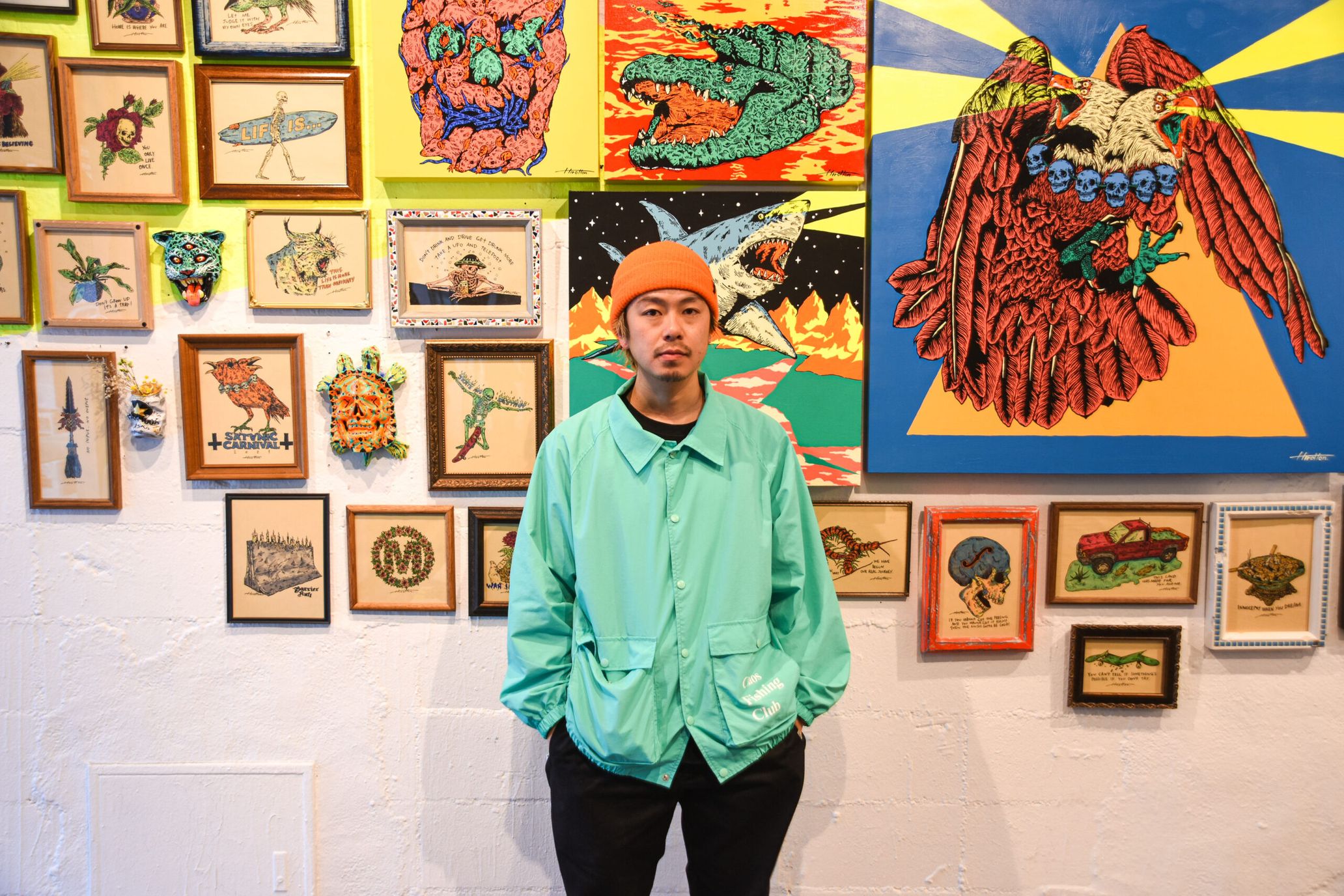
Hirotton
An artist and painter, Hirotton also produces T-shirts and other self-made items under the name PARADOX and runs the silkscreen studio HAILPRINTS along with a friend. His work to date includes designing the HEROIN SKATEBOARDS deck series as well as graphic artwork for a number of fashion brands and musicians.
Instagram:@hirotton
Photography Cho Ongo
Edit Shuichi Aizawa(TOKION)
Translation Mimiko Goldstein

